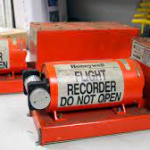What is electricity?
Simply, electricity is a flow of electric charge. The typical way of transferring the energy is via electrons flowing through conductors such as copper wires.

Watts
Watts measure the electricity being used at a particular moment. A watt isn’t a great amount of power – machines require several watts to work. The capacity of electricity generation is gauged in multiple kilowatts.
The total quantity of electricity used over time is described in watt hours.
Kilowatt hours
A kilowatt hour equals the quantity of energy that would be used if you kept a 1,000-watt appliance in use for an hour.
You might use between 3,200 and 4,900 kWh of electricity every year, depending on your household’s size.
Megawatt hours
Megawatts measure a power plant’s output – or that of a whole city.

Gigawatts
Gigawatts track the capacity of vast power plants.
What is an electricity unit?
A unit of electricity measures how much energy has been expended at a property. Electricity companies charge you in pence for every unit of electricity you use. The amount used by an electrical appliance is dictated by the wattage (displayed on electrical appliances) and an electric meter box is available from electric meter box.
An online electricity bill calculator is here: https://www.electricitybillcalculator.com/.
Reading your electricity meter
Electricity meters come in different types. Smart meters send your reading automatically to your supplier.
Digital meter – Observe the black numbers from left to right – ignore the red numbers and those surrounded by red. An extra row of numbers is your less expensive off-peak reading.
Electronic meter – You may have to press a cycle display button to take a reading – others scroll automatically along the displays. Note the numbers from left to right – again, ignore red numbers and those surrounded by red.
Dial meter – Every dial begins at 0 and goes up to 9. Read the dials moving from left to right. If the pointer is in the middle of two numbers, note the lower. If the pointer sits between 9 and 0, note 9 and lower what shows on the left-hand dial by one. Take no notice of the final dial on the right.




















+ There are no comments
Add yours